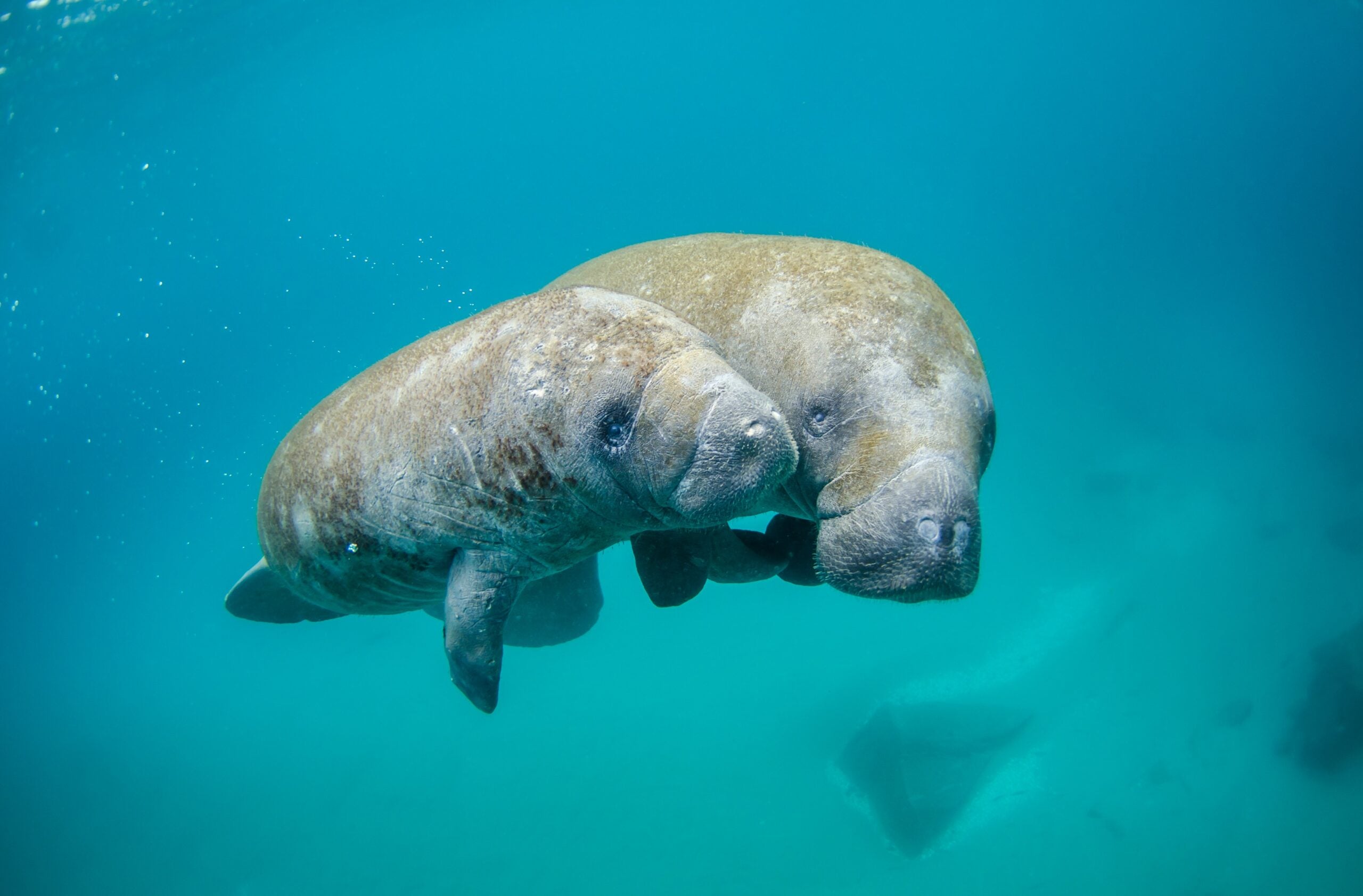As Manatees Experience 'Record-Breaking Mortality' Linked to Pollution, Wildlife Officials Race to Rescue and Feed the Survivors

(Photo: NOAA)
The manatee might be one of the most beloved creatures associated with the state of Florida – but pollution off that state’s coastlines has put the animals in grave danger. As the animals are making their way to the warmer waters where they typically graze during the winter months, the vegetation they graze upon has been devastated, largely due to a pollution-triggered algae bloom.
Matters have become so dire that wildlife officials are now rushing to execute a rescue mission which will involve hand-feeding living animals they’re able to find in time. Reporting on the mission for The Guardian, journalist Jessica Glenza described what Florida’s manatees are facing as a “record-breaking mortality” event.
Data collected in early 2019 estimated Florida’s total manatee population at just 5,700. In 2021, 1,038 of the animals have already perished. In recent years, an average of 500 manatees have died annually; in 2001 it was just over 300.
“They are starving, and I see it in person,” Paul Fafeita of Florida anti-pollution group Clean Water Coalition of Indian River County told a local television station in Palm Beach. “I’m out there all the time. I’m witnessing it. It’s heart wrenching. You fix it now, or a couple of years you don’t have to fix it, because it will be too far gone”
To address the issue, the U.S. Fish and Wildlife Service and the Florida Fish and Wildlife Conservation Commission have adopted a joint plan which will be based out of a temporary field response station at the Indian River Lagoon along Florida’s Atlantic coastline. There, the seagrass on which the manatees feed has been depleted by 90 percent, according to expert estimates, due to nitrogen-heavy run-off from sewage and agriculture that has entered the water. From there, the agencies deploy experts to rescue, feed, and provide health checks on living manatees, as well as recovery of those found deceased. According to a press statement, any animals that need longer-term care than can be provided at the field station will be transported to federally-permitted rehabilitation facilities.
“We understand the importance of a timely response. Our agencies and Unified Command partners carefully considered all aspects of a short-term feeding trial,” said Shannon Estenoz, Department of the Interior Assistant Secretary for Fish and Wildlife and Parks. “It is critical we help manatees in the short term with actions that are compatible with their long-term well-being and resilience.”
During the trial, officials will feed the manatees romaine lettuce, cabbage, and other nutritious vegetation by hand to help them build their strength to survive. It’s an unusual approach to an urgent problem. Typically, as Reuters reports, wildlife authorities prefer approaches that reinforce distance between humans and animals. Hand-feeding could cause the animals to lose their healthy distrust of humans, or even create a feeling of dependence on humans, which could put the animals in long-term danger.
Experts caution that members of the general public should not attempt to hand-feed manatees themselves. In addition to being illegal, doing so and can harm or even kill the manatees.
RELATED: 20 Under 20: Meet the Youth Climate Activists Saving the Planet
Get more of what you love from VT. Follow us on Instagram, Facebook, and Twitterand sign up for our email newsletters.